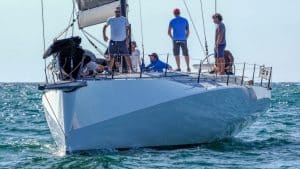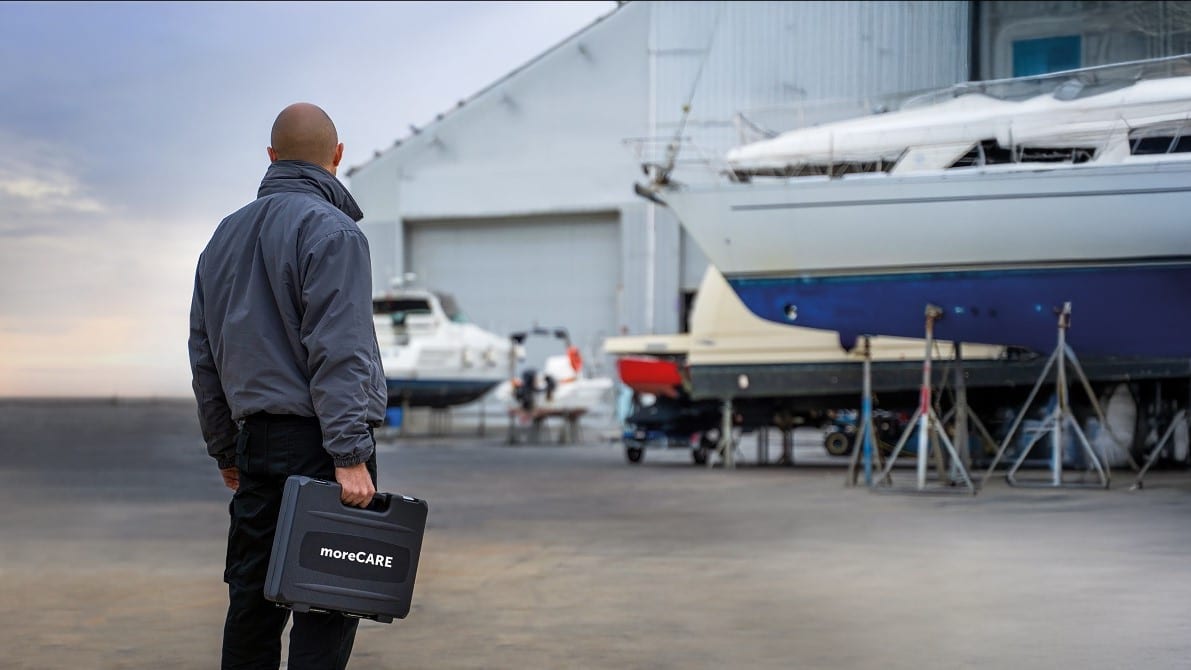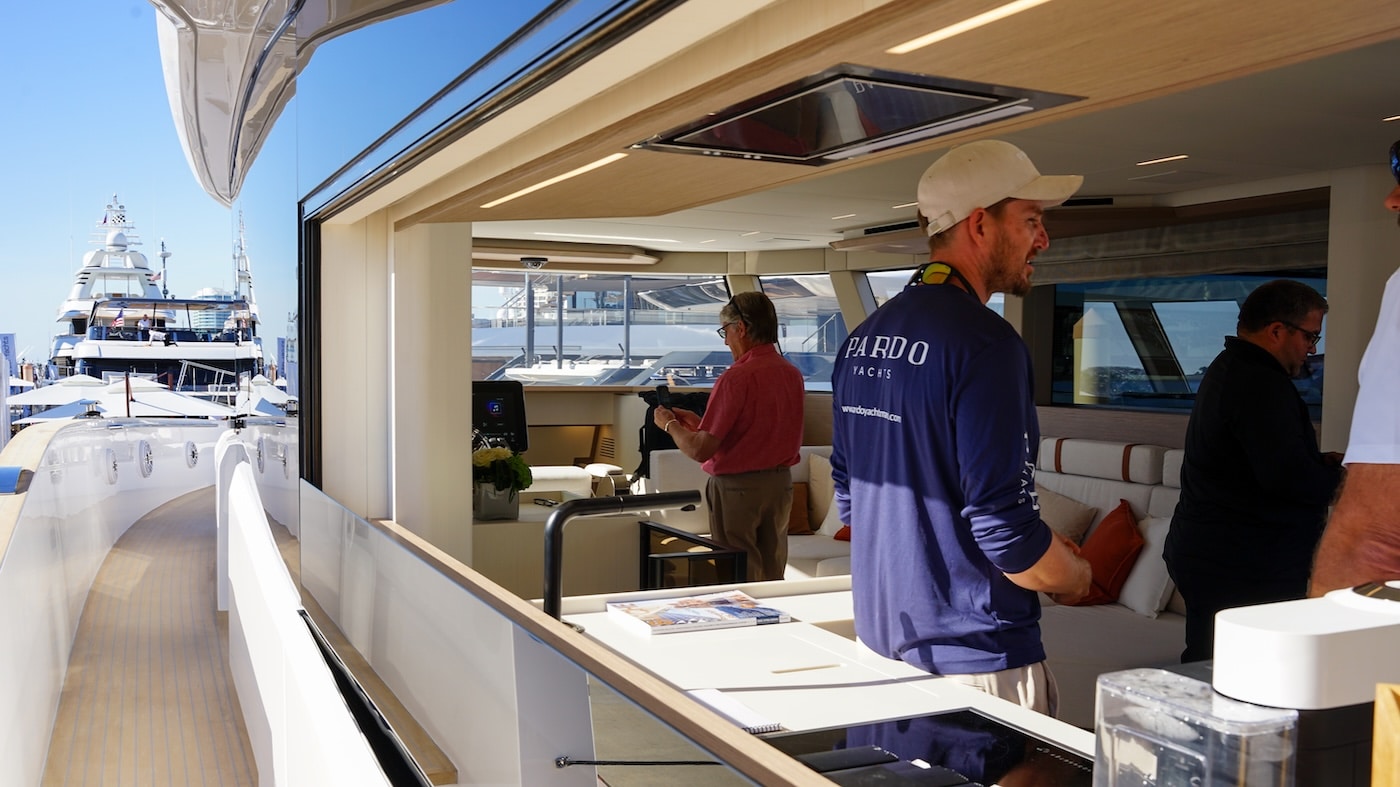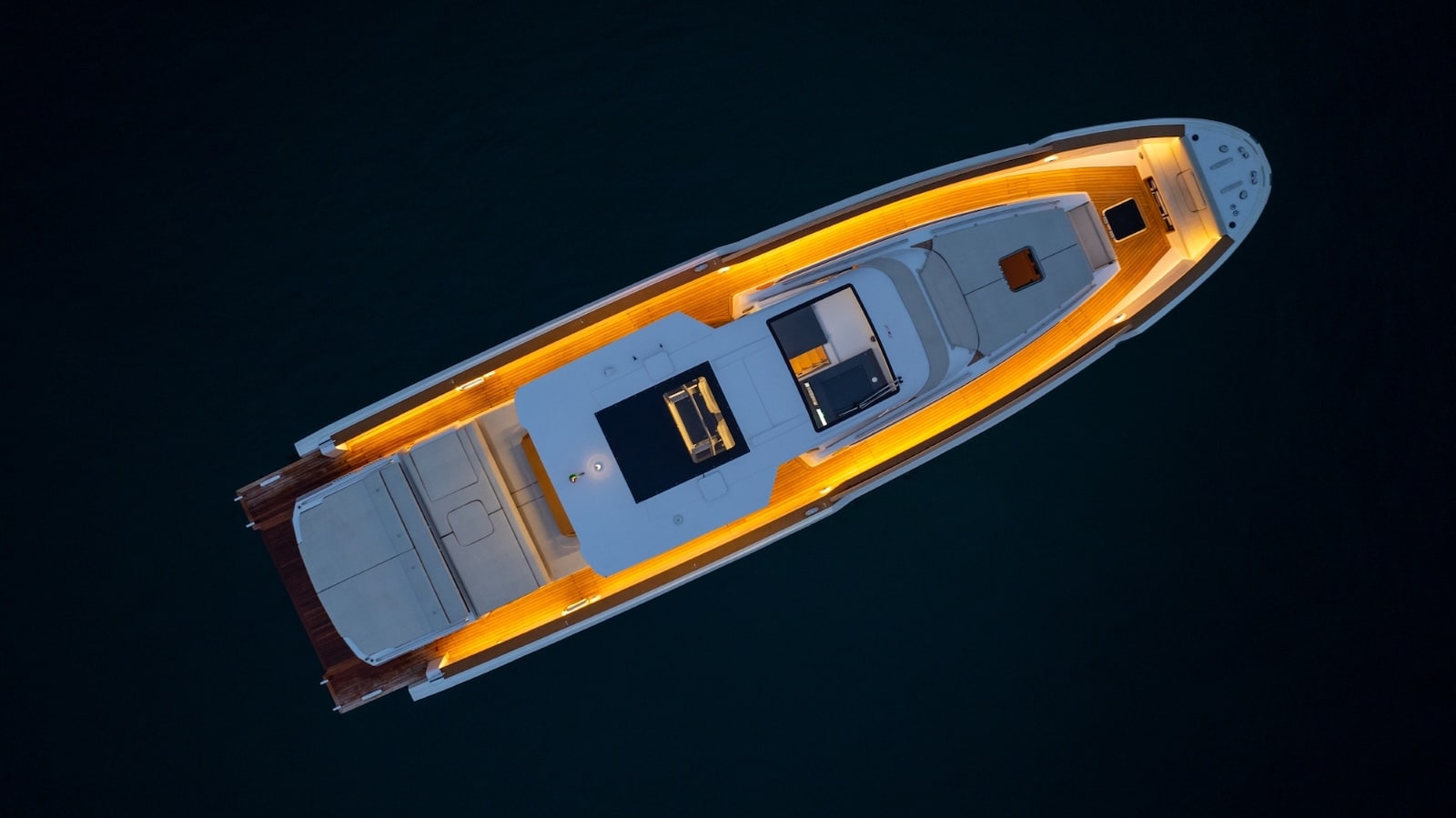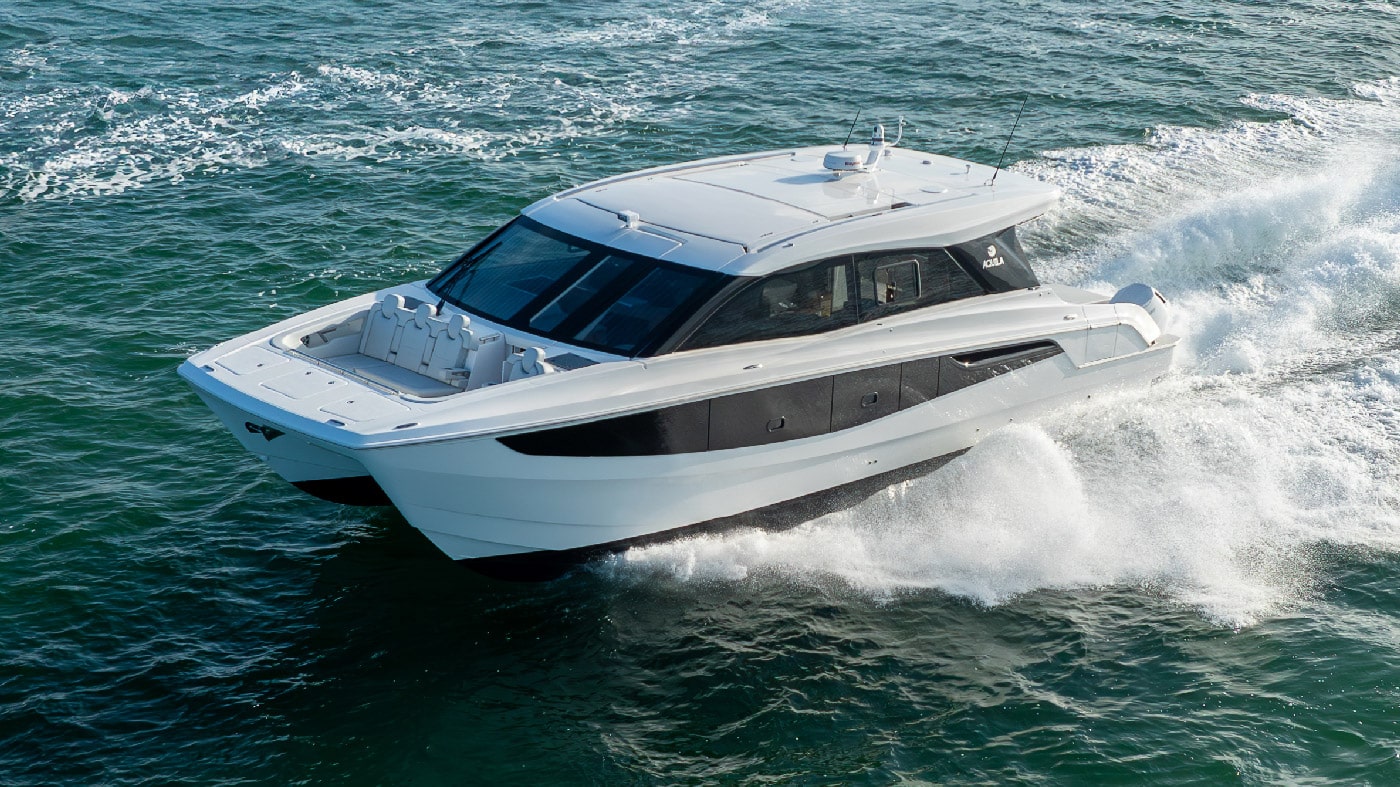A very special sea trial for the Neo 570c, the latest addition from NeoYachts.
Racing, cruising-racing 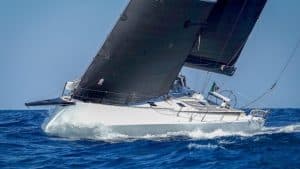
Paolo Semeraro was certainly thinking of this when he designed the new Neo 570c which, as you will understand from reading this article, is a boat that can easily switch between being built as a pure racer or as a comfortable cruiser-racer.
A very special boat then, which we could not resist testing at sea.
Neo 570c Sea Trial
I had the chance to test this wonderful boat on two occasions: the first in a club regatta with very little wind, and the second on a very windy test day. A truly unrepeatable opportunity, which allows us to describe her in both situations.
In very light wind
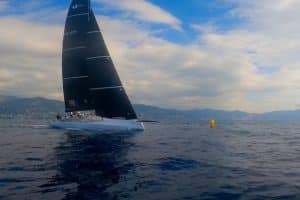
On board are just four sailors and a crew of skiers and golfers (this is the formula for the VGS Cup) who have no sailing experience whatsoever. Carbonita, this is the name of the Neo 570c on which we are sailing, is now in racing version (square-top mainsail, running backstay and without a jib furler), so we will have to decide how best to be organised for manoeuvring. A quick glance at Antonio Latini, the skipper, and we opt for a white-sail regatta (so to speak of course), the best solution to avoid getting into trouble.
The wind increases a little and is around 4 knots of true, just enough to give the start, we hoist the genoa and begin to familiarize ourselves with the Neo 570c. We bear away, we trim for speeds and Carbonita sets off immediately, accelerating and creating her apparent. We are already sailing at over 5.5 knots, much faster than the true wind, despite the fact that the 105% jib at the bow isn’t exactly the best in these breezes.
At five minutes we approach the starting line and begin to figure out where to start, a luxury few of us can afford because while we are sailing fast, the other boats are struggling to move. It’s a bit surreal, as if the wind was only there for us.
As time runs out, 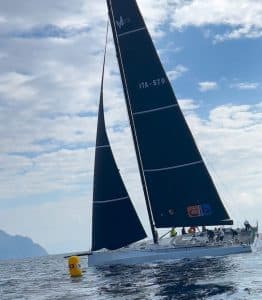
But there is none for anyone, not only are we faster, but we also make a hell of an angle and so, as the windex at the masthead points in an almost unnatural direction, we pull away little by little from the rest of the fleet.
The wind picks up a bit, it gusts up to 7/8 knots and we sail over 9 while I explain to the crew how to set up in the toe-rail. The Neo 570c, even under gusts, always has controlled reactions, never nervous, with a really excellent overall balance.
Our direct competitor, on the other hand, hoists a black gennaker as big as a football field and goes down great, it will be hard to resist in the two sides of reach that today’s course provides, it’s a long way to go, and in the worst conditions for us. But evidently this is not enough because the Neo 570c manages to conquer the line of honour with a lead of over 4 minutes!
In short with little wind we sail really fast aboard the Neo 570c, I can only imagine what it would be like if we had a light genoa and gennaker …
In strong (and gusty) wind
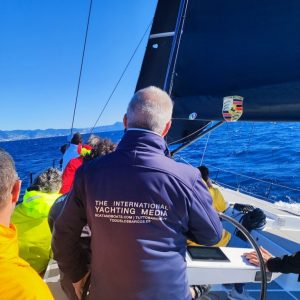
There were plenty of people on board, flocking from all over Italy (and beyond) to test the Neo 570c . As many as 18 people on board (yes, you read that right) who, quite simply, once on board almost disappear. Carbonita has room for everyone, which is an important pro, both in racing and cruising.
We hoist the mainsail directly by reefing and, thanks to today’s quieter furling configuration, we unfurl the jib, bear away and set off like a rocket in that miracle of strong wind and flat water that only the north wind in Liguria can provide.
I expected Carbonita to be fast, but I didn’t expect her to be balanced and easy to handle, even in these conditions. And yet, at practically all speeds and even upwind, all it takes is a touch of the wheel to get a corresponding course change, as if there were only 10 knots of wind.
Close hauled 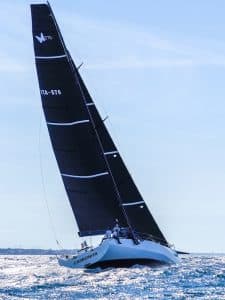
Pushing out to sea the wind increases and settles between 22 and 25 knots. The waves are clearly perceivable, they are dry, steep and try to make things difficult for Carbonita, which, however, does not give a damn and continues on her way. The boat remains resoundingly dry as the splashes are pushed back out.
In these somewhat ‘bad’ conditions, it becomes evident and visible, especially when the boat is heeling, how the bow flare makes the air converge on the base of the jib which, with this expedient, receives clean air and yields decidedly more than usual.
Another effect, resulting from the adoption of this design, is that going to the bow to adjust the base of the jib becomes much safer than usual.
We all take turns at the helm, competing to see who can pass 13 knots. The atmosphere on board is, despite the conditions, relaxed and serene. A miracle only made possible by this amazing Neo 570c.
But is this boat for racing or cruising? The answer is clearly painted on the faces of all those who are enjoying this fantastic day, competitive owners or Sunday boaters, all united by a single emotion, the pure enjoyment of (very) fast and safe sailing, within everyone’s reach. A balance that is truly difficult to achieve but which, with the Neo 570c, Paolo Semeraro has succeeded in achieving.
What if Neo 570 was mine? How would I configure her?
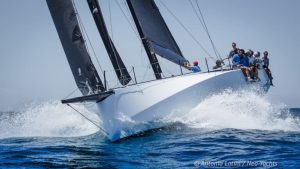
If this boat were mine it would certainly be dedicated to long navigation, and therefore to cruising. I’d want it to be fast but easy to handle with a super small crew, i.e. alone, which is how I usually sail.
I would certainly renounce the square-top mainsail in favour of a furling in the boom and opt for a split backstay (instead of the running), hydraulically adjustable.
I would also give up the 2.55-metre bowsprit in favour of a more manageable one, comfortably reachable from the bow, where I would set up the attachment to rig a rollable Code 0.
Lastly, I would use a fixed jib furler (which I would like to be identical to the one I tested) and a flying forestay to be fitted only when needed, for the foresail, when the wind is really strong.
This way I would have a boat that, while still being a missile, would give great excitement in pure cruising, thus allowing me to go sailing all the time, relegating the use of the engine to just manoeuvring in and out of ports.
Then, with a boat like that and maybe adding a gennaker, I’d immediately run to sign up for the Roma x 2 !!!
Technical Specs
Length (LOA ): | 17.50 m |
Beam (Bmax): | 5.30 m |
Draft max: | 4.20 – 2.80 m (Lifting Keel) |
Displacement : | 11,500 kg |
Keel Weight: | 5,300 kg |
Water Ballast: | 450 l |
Tender: | 3 m (stored with engine) |
|
|
Engine: | Volvo Penta D-275 Saildrive 75 hp |
Water Tanks: | 400 l |
Fuel Tanks: | 200 l |
|
|
Sail Area Upwind: | 184 m2 |
Sail Area Downwind: | 410 m2 |
Main Area (Racing): | 110 m2 |
Main Area (Cruising): | 100 m2 |
Headsail Area: | 74 m2 |
Asymmetric Spi Area: | 300 m2 |
|
|
CE Category: | A ‐ Ocean |
Crew Max: | 15 people |
|
|
Neo Yachts & Composites | |
Designer: | Carkeek Design Partners |

